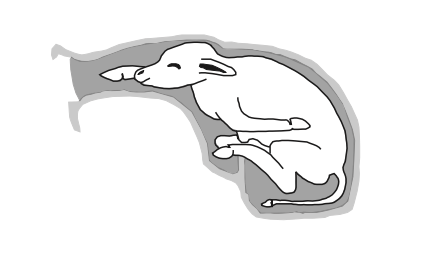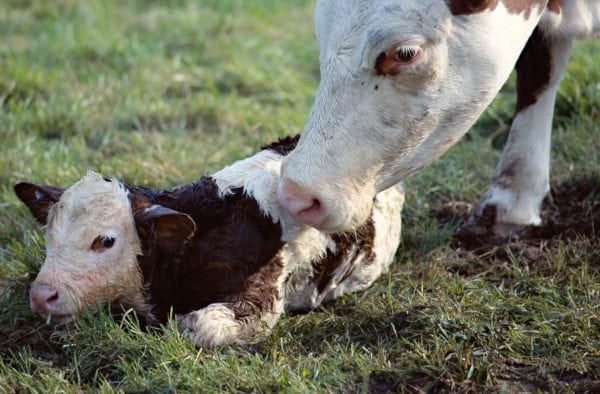The first step in providing assistance during calving is assessing the problem. There are several common situations encountered when delivering a calf. Occasionally, one or both forelegs are retained. If both forelegs are retained, then only the head will be in the birth canal. The forelegs must be straightened out and delivered simultaneously with the head resting on top of the forelegs.
When in doubt, call your veterinarian. The outcome is always more favorable if assistance is provided sooner rather than later. Waiting too long unnecessarily risks the life of the cow or heifer and her calf.
Read here to learn more about how to manage a successful calving season.
Download a PDF of Managing a Successful Calving Season, ANR-1403.
Related Topics
The first step in providing assistance during calving is assessing the problem. There are several common situations encountered when delivering a calf. Sometimes a calf can have its head underneath both forelegs. The head must be placed on top of the forelegs, and then delivery can proceed.
When in doubt, call your veterinarian. The outcome is always more favorable if assistance is provided sooner rather than later. Waiting too long unnecessarily risks the life of the cow or heifer and her calf.
Read here to learn more about how to manage a successful calving season.
Download a PDF of Managing a Successful Calving Season, ANR-1403.
The first step in providing assistance during calving is assessing the problem. There are several common situations encountered when delivering a calf. Sometimes a calf can have its head turned to the side during delivery. The neck must be straightened out and the head placed on top of the forelegs for delivery to proceed.
When in doubt, call your veterinarian. The outcome is always more favorable if assistance is provided sooner rather than later. Waiting too long unnecessarily risks the life of the cow or heifer and her calf.
Read here to learn more about how to manage a successful calving season.
Download a PDF of Managing a Successful Calving Season, ANR-1403.
*This is an excerpt from Beef Conformation Basics, ANR-1452.
The two points of reference to be aware of in evaluating the hip are the hooks and pins. Both points are identified in Figures 16 and 17, with the pins being the point beneath the tail head. Although some breeds, such as those influenced by Brahman genetics, are less likely to be level, the ideal beef animal would be nearly level from hooks to pins. Although it is not always the case, a level hip normally equals a longer, more muscular hip if for no other reason than length itself. Also, a level hip is normally considered more eye-appealing. As the hip becomes less level, it can become shorter and be associated with other issues such as cattle having their hind legs placed too far beneath them.
Some producers have defended cattle with a minor slope from hooks to pins by saying these cattle have an advantage when it comes to calving and expelling afterbirth. As long as the slope is not extreme, not much compromise is made in regard to structural correctness.
One of the more problematic arrangements of the hip can be found when cattle are higher at their pins than at their hooks. In females, this can lead to problems with calving and expelling afterbirth. Although the calving problem is only expressed in females, breeding bulls exhibiting this characteristic should be selected against as well in order to not perpetuate the characteristic.


